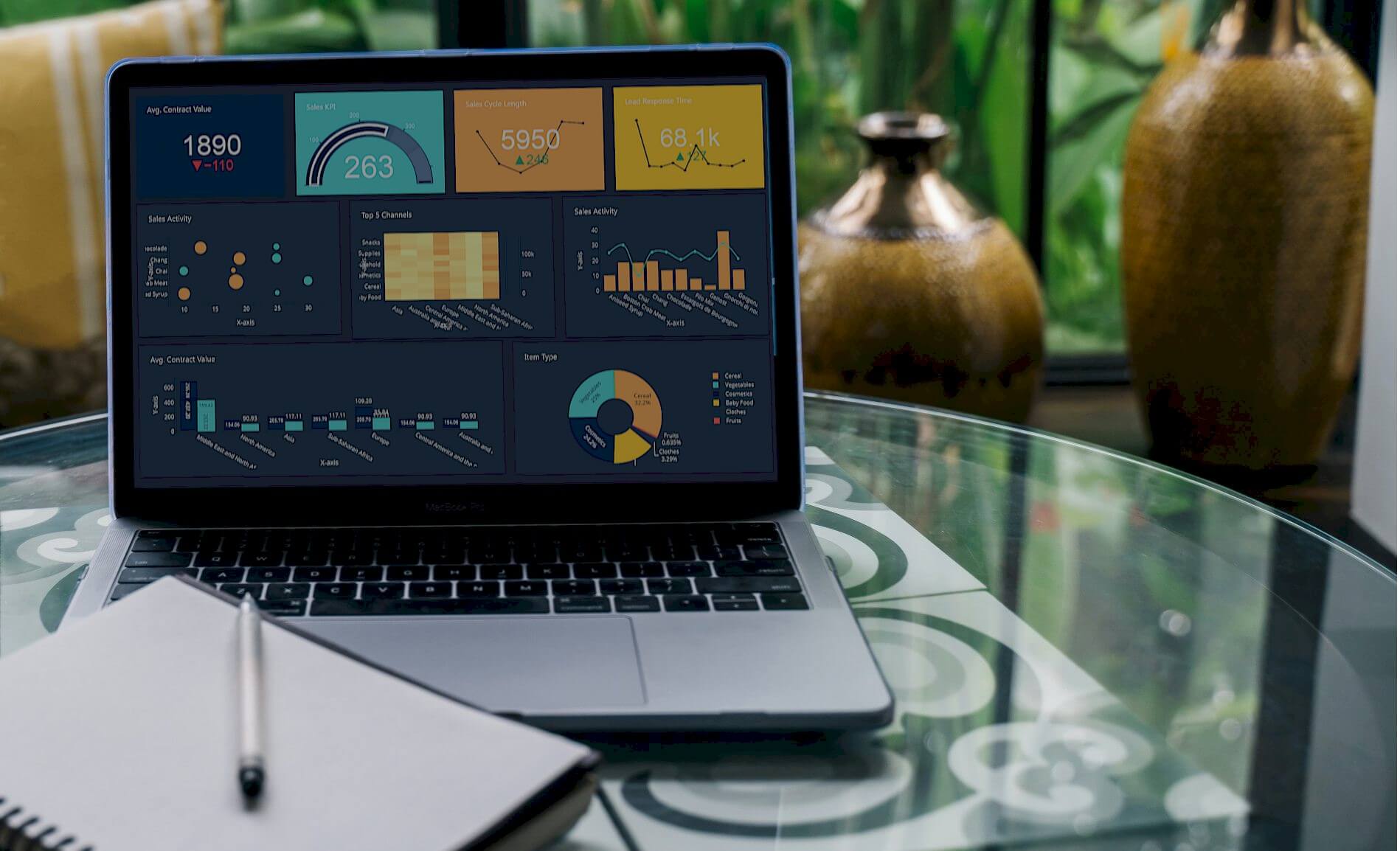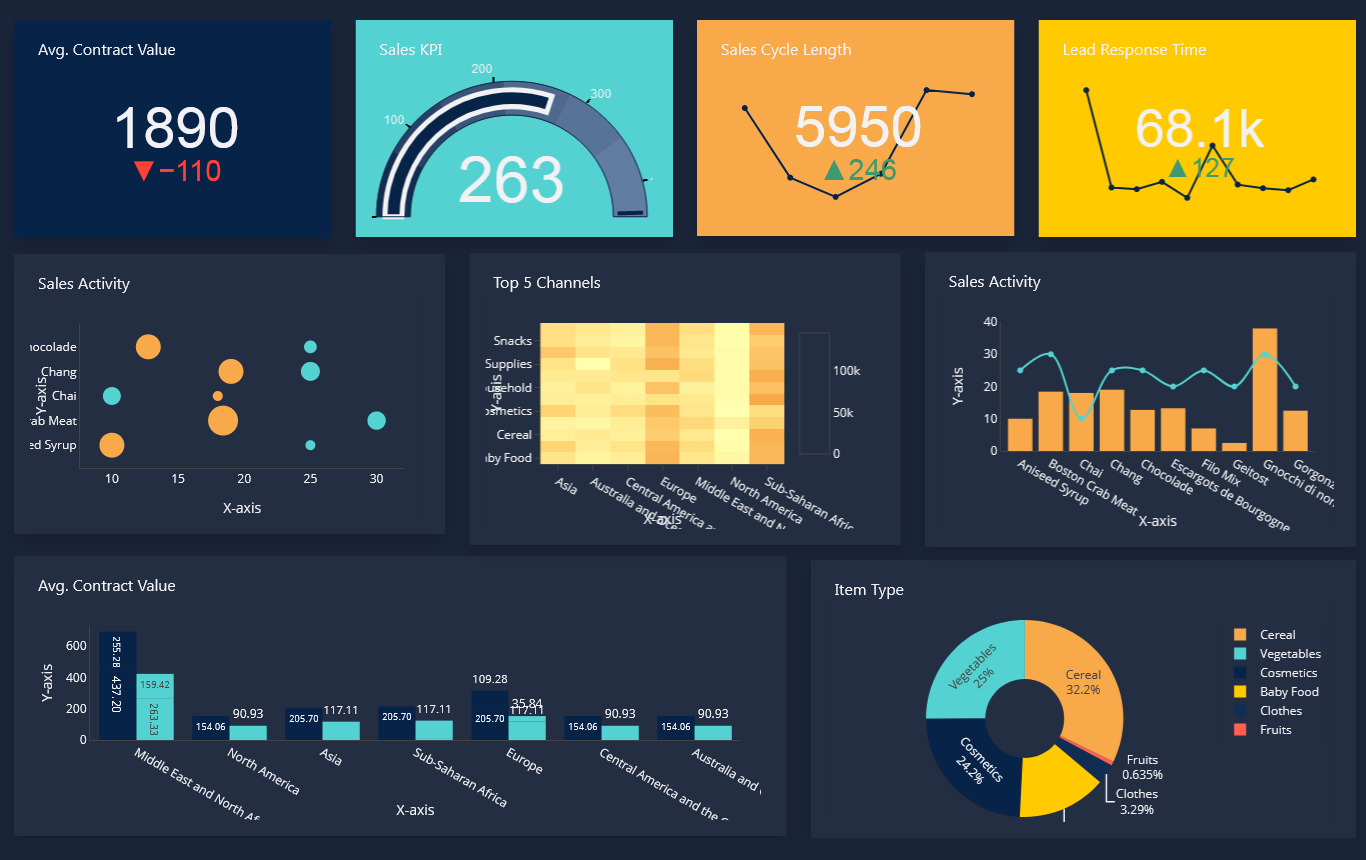KPI REPORTING TOOLS – Simply monitor and report your key metrics for useful insights.
KPI reporting tools are software solutions designed to collect, analyze, and present key performance data in a meaningful way. These tools simplify the process of tracking KPIs, offering real-time insights and visualizations that facilitate decision-making. In the digital age, businesses are inundated with data. The challenge lies in transforming this wealth of information into actionable insights. This is where Key Performance Indicators (KPIs) and, more specifically, Dashboard Builder step in.

In this blog post, we'll delve into the significance of KPI reporting tools and explore how a Dashboard Builder serves as a pivotal tool in unlocking the potential of your data.
Why are KPI reporting tools so important?
KPI Reporting Tools are quantifiable metrics that reflect the performance of an organization in key areas. They provide a clear and objective measure of progress toward strategic goals. Whether it's monitoring sales growth, assessing customer satisfaction, or tracking operational efficiency, KPIs help businesses stay on course and adapt to changes in the market.
Understanding KPIs and Their Impact:
Key Performance Indicators are the compass of any successful business strategy. These quantifiable metrics provide a snapshot of an organization's performance in various areas, from sales and marketing to operations and customer satisfaction. KPIs offer a means to measure progress, identify trends, and make informed decisions that drive success.
The Evolution of KPI Reporting:
Traditional methods of KPI reporting often involved manual data collection, complex spreadsheets, and static reports. However, as the volume and complexity of data increased, businesses sought more efficient ways to monitor and analyze KPIs. Enter Dashboard Builder – dynamic tools designed to transform raw data into visually engaging, real-time insights.
What is the KPI reporting method?
Key Performance Indicator (KPI) reporting is a systematic method of measuring, analyzing, and presenting key metrics that are vital to an organization's strategic goals. This method involves the identification of relevant KPIs, the establishment of benchmarks or targets, and the ongoing collection of data to assess performance against these standards. KPI reports utilize a combination of visualizations, charts, and narratives to offer a clear and concise representation of critical business metrics. This reporting method enables decision-makers to track progress, identify areas for improvement, and make informed strategic decisions, ultimately driving the organization toward success.
How Dashboard Builder Serves as a Dynamic KPI Reporting Tool

- Customization: Dashboard Builder allows users to tailor their dashboards to the specific needs of their business. Whether it's revenue trends, customer retention rates, or operational efficiency, users can choose the KPIs most relevant to their goals.
- Real-time Updates: The ability to access real-time data is a game-changer. Dashboard Builder provides live updates, ensuring that decision-makers have the latest information at their fingertips to respond promptly to changes and capitalize on opportunities.
- Data Visualization: Visualizations such as charts, graphs, and heat maps transform complex data sets into easily digestible insights. This visual representation enhances understanding and enables stakeholders to quickly grasp the significance of KPIs.
- Interactivity: Interactive dashboards empower users to drill down into specific KPIs, explore trends, and gain a deeper understanding of the factors influencing performance. This interactivity fosters a more engaged and informed decision-making process.
- Integration Capabilities: Dashboard Builder often integrates seamlessly with other business tools and data sources, providing a comprehensive view of organizational performance. This integration ensures that decision-makers have a holistic understanding of their operations.
Create insightful KPI reports in minutes with the Dashboard Builder
The Dashboard Builder serves as an effective KPI (Key Performance Indicator) reporting tool by providing users with the means to monitor, analyze, and visualize key metrics in a dynamic and comprehensible manner. Here's how Dashboard Builder can be utilized as a KPI reporting tool:
1. Customizable Dashboards:
- Users can create customized dashboards tailored to their specific KPIs and business objectives.
- The drag-and-drop interface allows for easy arrangement of charts, graphs, and other visual elements.
2. Real-Time Data Updates:
- Dashboard Builder supports real-time streaming of data, ensuring that KPIs are displayed with the latest and most current information.
- Users can monitor their KPIs without the need for manual data refreshes, enabling prompt decision-making.
3 Diverse Data Sources:
- The tool seamlessly connects to various data sources, including databases (MySQL, MS SQL, PostgreSQL, etc.), spreadsheets (MS Excel, Google Sheets), and more.
- This flexibility enables users to consolidate KPI data from multiple platforms into a single, unified dashboard.
4. Extensive Chart Library:
- The extensive chart library, offering various chart types like line charts, bar graphs, pie charts, and more, allows users to represent KPIs in visually engaging ways.
- Different chart types can be chosen based on the nature of the KPIs being monitored.
5. Historical Trend Analysis:
- Users can analyze historical trends of KPIs over time, facilitating a better understanding of performance evolution.
- This feature assists in identifying patterns and making informed predictions about future KPI outcomes.
6 .Forecasting Capabilities:
- Dashboard Builder utilizes business intelligence technologies to analyze data and make spatiotemporal forecasts for future outcomes.
- This forecasting functionality assists users in anticipating trends and potential shifts in KPIs.
7. Accessibility and Collaboration:
- Dashboards created with Dashboard Builder are fully responsive, allowing users to access KPI data from various devices.
- The tool supports collaboration, enabling multiple stakeholders to view and interact with KPI dashboards, fostering a data-driven decision-making culture.
8. Offline Capabilities:
- The Windows Desktop version of Dashboard Builder doesn't require internet access to function, providing users with offline capabilities.
- This feature ensures that users can access and analyze KPI data even in environments with limited or no internet connectivity.
9. Language Support:
- Dashboard Builder is available in multiple languages, allowing users to create KPI dashboards in their preferred language.
- This accommodates a diverse user base and facilitates ease of understanding for global teams.
10. Integration with Web Applications:
- The tool seamlessly integrates with web applications, including those built with PHP, HTML, WordPress, or Laravel.
- This integration enables users to embed KPI dashboards directly into their existing web infrastructure.
The Impact on Decision-Making:
Utilizing a Dashboard Builder as a KPI reporting tool has a profound impact on decision-making within an organization. The democratization of data – making it accessible to stakeholders across departments – fosters a culture of data-driven decision-making. With a clear, visual representation of KPIs, teams can align their efforts with organizational goals, address challenges proactively, and capitalize on opportunities.
Conclusion
In the fast-paced world of business, harnessing the power of KPI reporting tools, specifically Dashboard Builder, is essential for staying competitive. This tool empowers organizations to not only track performance but also to interpret and act on data effectively. As businesses continue to navigate an increasingly complex landscape, the synergy between KPIs and Dashboard Builder emerges as a key driver of success, providing a roadmap for informed and strategic decision-making.